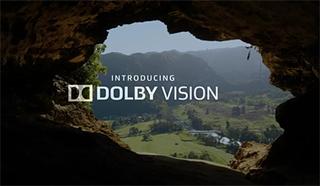Tech Trends at NAB Show 2015

ALEXANDRIA, VA.—Attending the NAB can easily be overwhelming—there is simply so much to see and learn, especially in a year like this when there are many technical issues at play. For one perspective on last week’s NAB Show, I spoke to John Marino, the vice president of technology for the NAB.
Prior to joining NAB, Marino was president of a consulting firm with clients in the broadcast and telecommunications industries. He went on to become the vice president of engineering for NewCity Communications and a member of the NewCity Common Council. During his 12 years at NewCity and its predecessors, he managed a team of engineers and was responsible for the evaluation, design and construction of the company’s broadcast stations. He is also a former radio personality and program director.

John Marino, vice president of technology for NAB
Marino joined the National Association of Broadcasters in 1991 as manager of technical regulatory affairs. Always interested in helping broadcasters, his responsibilities presently include technology evaluation and the development of NAB technology conferences and educational activities. With his technology and management background, as well as his responsibilities for the NAB, Marino has a unique perspective on the show and its technology trends.
BE Extra: It looks like 4K/UHD is here to stay. Is 4K just a stop on the way to something even higher, or should broadcasters plan to incorporate some variety of 4K into their budgets?
Marino: Of course, the consumer electronics industry is heavily promoting 4K. Broadcasters on the other hand, for the most part, have their sights set on another technology that will improve the viewer experience. It’s HDR—high dynamic range. While 4K has a lot to offer for production and post-production, 4K does not offer much advantage to the typical in-home viewing environment where most consumers have small displays. HDR offers visible improvements on all size displays and can be more easily implemented by broadcasters. Dolby had a fantastic demo of HDR video at the show that highlighted the improved realism that HDR can bring to video content.

Dolby Vision features dramatically improved dynamic range with HD video.
BE Extra: There was also a lot of pre-show discussion of IP video, but what I remember from the show was multiple companies that showed 12G-SDI over coax. What are your thoughts on the equipment connection technologies shown at the show?
Marino: IP video was a very hot topic at the 2015 NAB Show. Many companies are promoting IP-centric products and applications that promise to make the broadcast facility more efficient. In these days of multiple channels and ever-changing content/distribution demands, IP seems to be a natural progression of the content ecosystem. We’ve heard predictions that within the very near future (five-10 years) IP will be the norm for broadcast plants. Based on the recent decision from companies like Disney to jump on the cloud-based IP bandwagon, we can certainly expect others to soon follow.
BE Extra: When the digital transition began 15 years ago, the focus was on MSDC IOT transmitters. However, it seems that solid-state transmitters are now the favored technology due to their increasing efficiency and lower maintenance. What impressed you in regard to RF trends at the NAB Show?

GatesAir Maxiva ULXT solid-state UHF transmitter
Marino: Much R&D has gone into the development of solid-state devices that will operate at high power levels and high frequencies. Already we are seeing solid-state RF amplifiers equaling or exceeding the efficiencies of IOT devices. Transmitters utilizing solid-state in lieu of IOTs were seen on the show floor this year from companies such as GatesAir. One of the issues RF designers are challenged with today is the demand for broadband operation. With repacking concepts being discussed, stations may need to shift operating frequencies. The ability of transmitting hardware—including antenna systems—to accommodate broadband operation can save considerable dollars should channel changes become necessary.
BE Extra: With cameras getting smaller and more capable, the amount of camera support gear (including drones, among many other camera platforms) is exploding. From your perspective, what are a couple of the more interesting trends in camera support?
Marino: Interesting enough and largely unexpected at this year’s show, we saw a large variety of gimbals used to stabilize cameras. And companies are still pushing the envelope to develop smaller cameras with higher resolution. This is likely due to the need to control weight for drone applications. This trend seems to also be moving over into the category of lenses, with companies improving quality and reducing weight. I suspect that the next few years will bring myriad content with aerial photography—based on improved camera technology and the low cost of unmanned aerial vehicles. We also noticed the trend for camera developers to offer evermore varieties of format options directly from the camera body.
BE Extra: Radio is all about audio, and television is only a pretty shell without good audio. Audio networking standards have made news lately but what’s your impression of recent audio trends?
Marino: It’s true that television audio has been sorely lacking over the years. Since audio is a subjective art, we have seen little attention being paid to it aside from the ubiquitous synchronization and loudness concerns. Unless the station or network has a resident “golden ears” on staff who knows how to properly monitor audio, quality is often lackluster. Flatscreen displays have ushered in the home theater environment with many consumers opting to install audio gear along with their HD sets. We expect this trend will encourage more broadcasters to fine tune their audio paths to bring enhanced quality to the viewer. While NHK has for many years at the NAB Show demonstrated 22.2 channel audio, we don’t expect this level of improvement to be available anytime soon outside large cinema facilities. However, surround sound of the 5.1 variety is here to stay and broadcasters would be wise to take advantage of it for local productions.
BE Extra: Any other thoughts on technology trends from NAB Show 2015?
Marino: We are seeing companies look at how Millennials consume video content. Our new generation of consumers expects to have its content available anytime, anywhere and on any device. While Facebook, Twitter and other social media companies are addressing this basic need, media organizations are seeking ways to make sure they do not get left out. Content producers are finding ways to improve user-generated content, insert advertisements unobtrusively and produce short-form entertainment that will capture the passion of younger consumers. This year’s NAB Show was a study in demographics as myriad young technologists, producers, editors and academics looked for professional options to satisfy the future needs of the next generation. Time will tell where we go from here but if content remains king, technology will create new and better ways to make it available to all.
Get the TV Tech Newsletter
The professional video industry's #1 source for news, trends and product and tech information. Sign up below.
Bob Kovacs is the former Technology Editor for TV Tech and editor of Government Video. He is a long-time video engineer and writer, who now works as a video producer for a government agency. In 2020, Kovacs won several awards as the editor and co-producer of the short film "Rendezvous."

